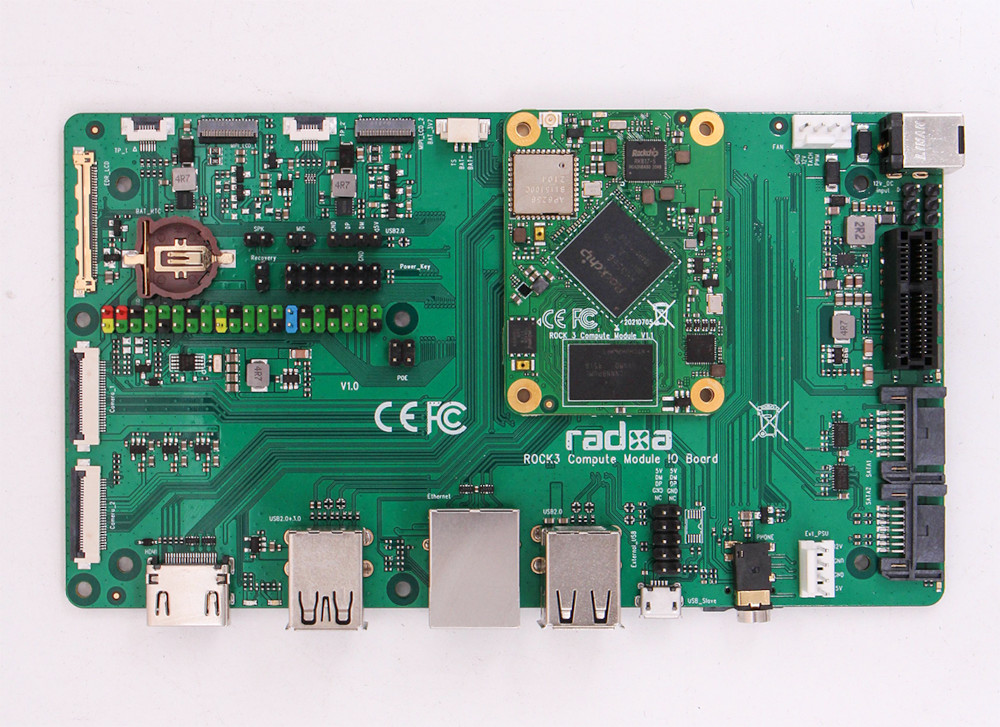Dear community,
We are happy to announce that Radxa CM3 is available as beta for open hardware projects developers.
Radxa CM3 is an SoM(System on Module) by Radxa based on Rockchip RK3566 SoC in a small form factor at 55mm x 40mm size, integrating CPU/PMU/DRAM/STORAGE/Wireless. Radxa CM3 offers out of box cost-effective solution for multiple purpose applications.
CM3 Highlights
- Quad Cortex-A55 2GHz low power and low heat solution
- ARM G52 2EE with OpenGL ES 3.2, OpenCL 2.0, Vulkan 1.1 support
- Neural network acceleration engine with processing performance up to 0.8 TOPS
- up to 8GB ram, 128GB eMMC
- Multiple display interfaces, eDP, MIPI, HDMI with dual display support
- High speed interfaces such as USB3.0/SATA/PCIe 2.0
- on module WiFi 5/BT 5 support
CM3 is designed as a drop-in replacement for Raspberry Pi CM4, we have tested multiple carrier boards which are designed for the CM4 including the Raspberry Pi CM4 IO board. These carrier boards can just work with CM3 without any modifications. Additionally, CM3 has more resources such as eDP and SATA/USB3.0, we make them available on a third 100p board to board connector. The detailed comparison of CM3 vs CM4 is available:
https://wiki.radxa.com/Rock3/CM3/vsCM4
For hardware devs to make use of the additional features of CM3, we have designed a dedicated IO board as well. It has the following features:
- Half mini-itx design, 170*85mm size, compatible with standard ATX case
- Support multiple display interfaces, HDMI, 2x MIPI DSI, eDP, dual display at the same time
- Support 2x MIPI CSI at the same time
- Support x1 PCIe card, support ATX case mount
- Up to 2x SATA(one shared with USB3.0, one shared with PCIe 2.0)
- Support Ubuntu/Debian and Android
The CM3 is now available as beta for hardware developers who are working on related projects. Developers can apply a free beta hardware from the following github repository:
If you have any questions about CM3, just ask in this thread. Happy hacking.
–Cheers, Radxa Team


